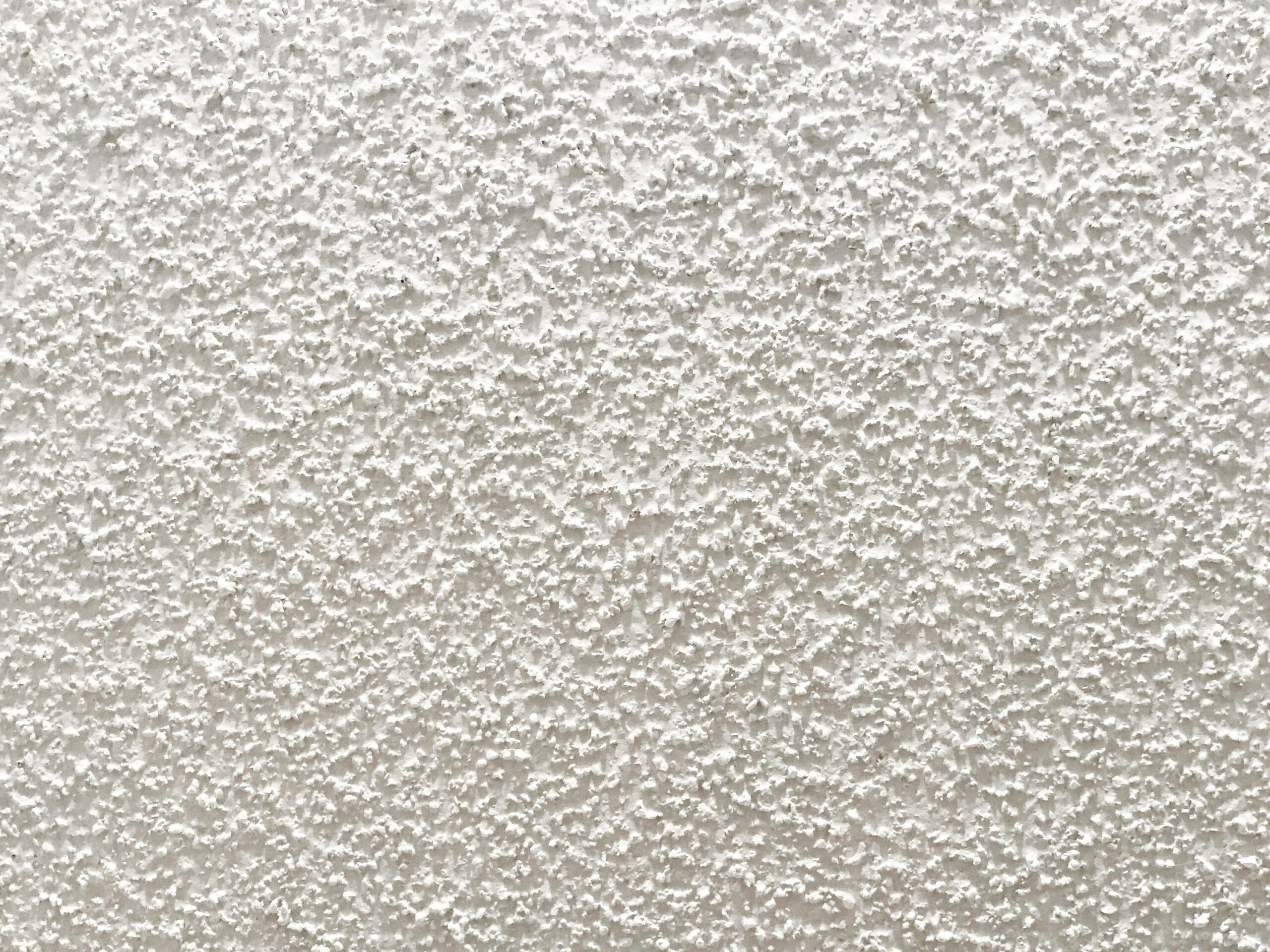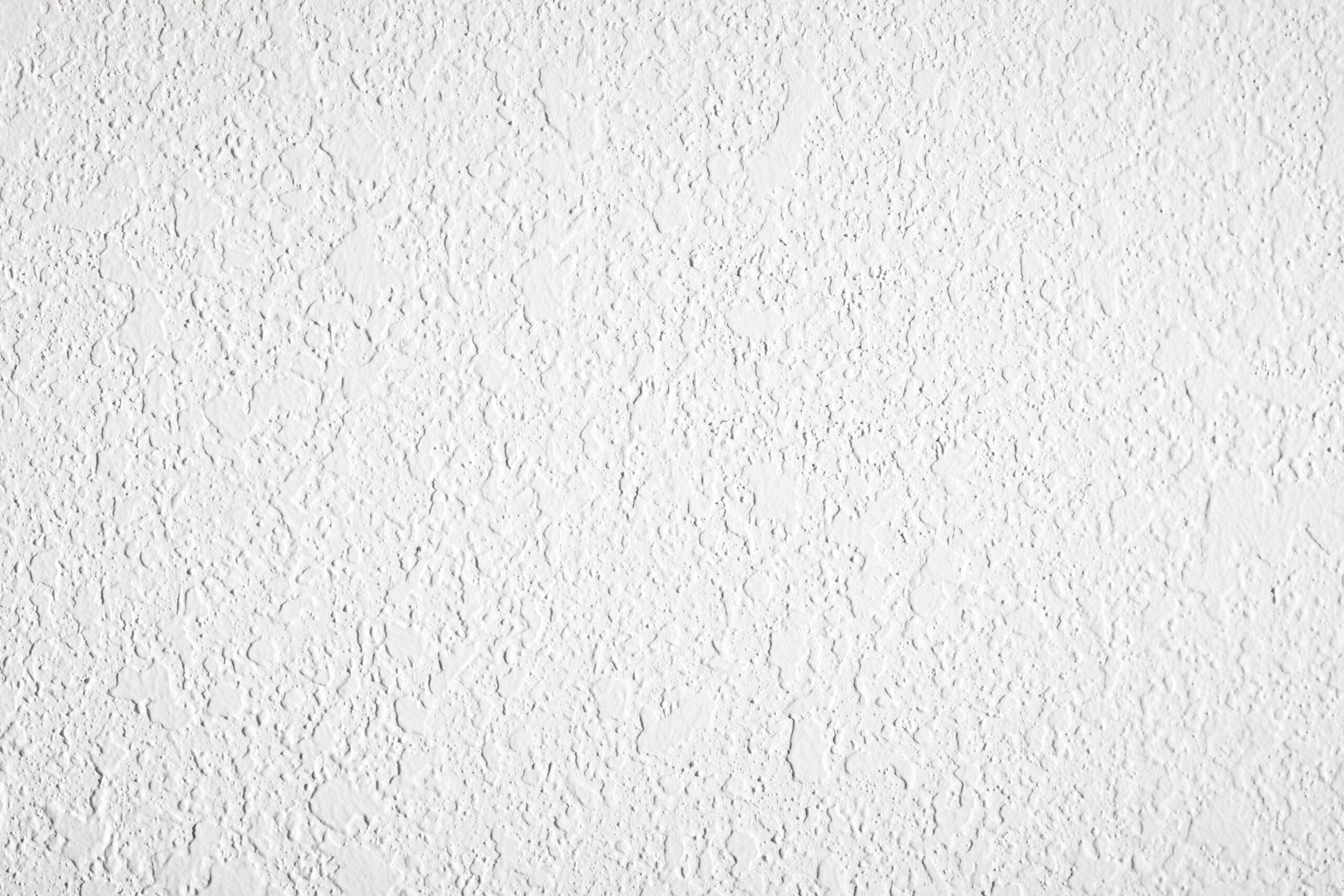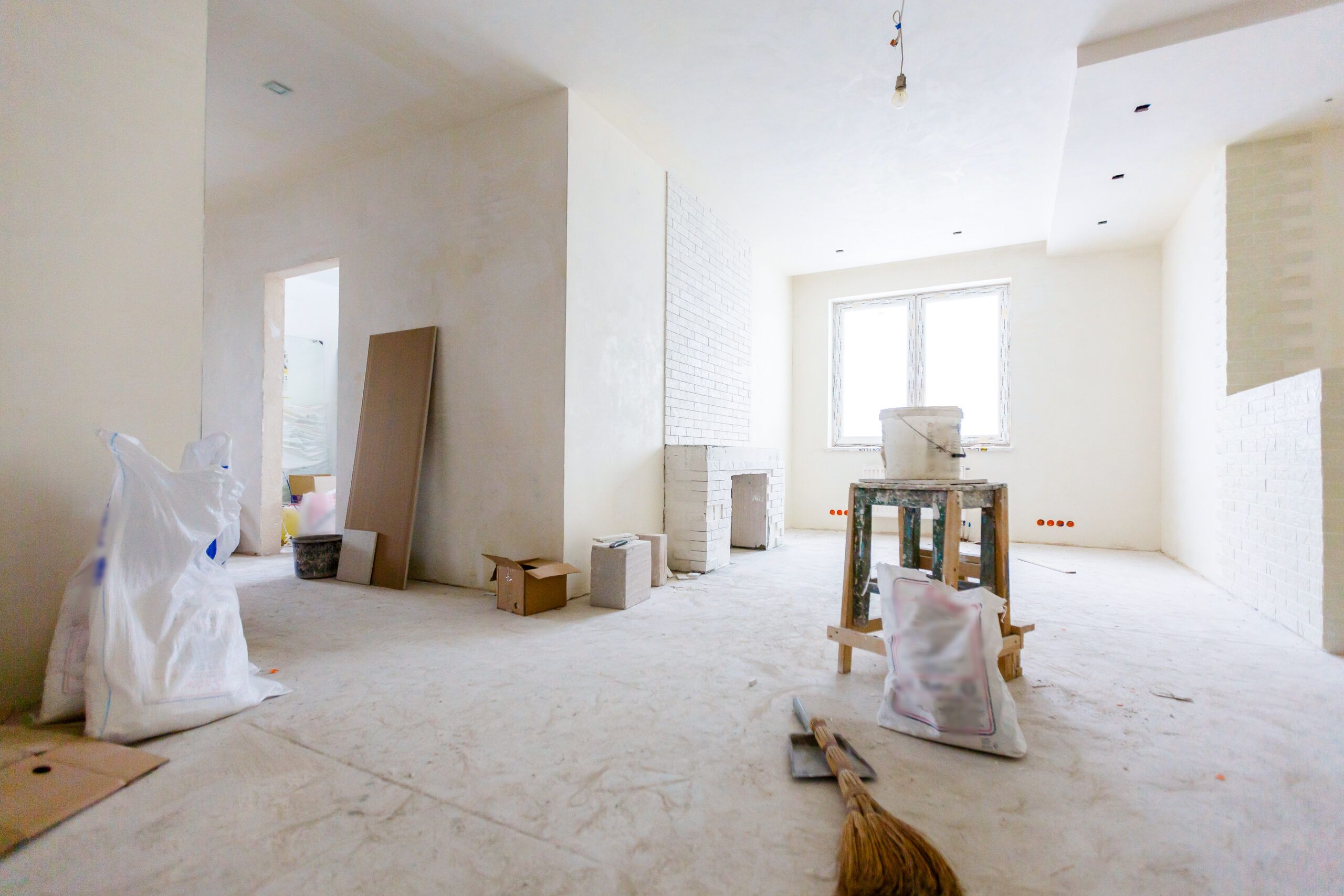Drywall textures can transform plain walls and ceilings into eye-catching features that bring character and depth to any room. Whether you’re aiming for a subtle pattern or a bold design, there are various methods to create the look you want. You can achieve different textures using a paint sprayer, specialized brushes, or a trowel. Some designs even combine multiple techniques. This guide explores popular drywall texture types and finishes, their best uses, and expert tips for creating them.
Spray Textures on Drywall
Spray textures are popular because they’re easy to apply and can quickly cover large areas. To create these textures, you spray a mix of drywall compound and water onto the surface using a specialized spray gun or hopper. Here are some common spray textures.
Popcorn

Popular in the mid-20th century, the popcorn texture has knobby, unevenly distributed bumps that resemble popcorn or cottage cheese. It’s a combination of stucco and Styrofoam that’s sprayed on ceilings to hide imperfections and serve as a sound insulator between floors.
Popcorn texture has fallen out of favor in recent years because of its dated appearance. While some still appreciate its retro vibe, it’s tough to clean. Popcorn textures applied before 1980 may contain asbestos, so we recommend professional testing and removal if you plan to replace this texture in older homes.
- Look and feel: Knobby bumps resembling popcorn.
- Best for: Ceilings, especially in mid-century homes.
Orange Peel

As its name implies, the orange peel texture is reminiscent of a citrus rind and has gentle mounds and dimples. You can achieve this look by spraying a combination of drywall mud and water onto the surface and going over the mixture with a roller. The orange peel style works on both ceilings and walls to warm up a room.
This texture is popular for its subtle appearance and ability to hide minor wall imperfections. It’s also relatively easy to clean compared to more pronounced textures, making it a practical choice for high-traffic areas or busy homes with children.
- Look and feel: Subtle dimples like a citrus rind.
- Best for: Walls and ceilings, especially in high-traffic areas.
Sand
To get a sand texture for your ceiling, combine primer and water, then spray it onto the surface. The effect very closely resembles coarse, wet sand. This texture provides a fine, granular appearance that adds a subtle depth to walls and ceilings without being overpowering.
The sand texture is particularly effective in rooms where you want to create a sense of warmth and coziness. It’s also a good option for hiding minor wall imperfections while maintaining a relatively smooth surface.
- Look and feel: Fine, granular texture, similar to wet sand.
- Best for: Rooms needing a warm, cozy atmosphere.
Lace
The lace texture is a layered design that resembles old-fashioned Spanish lace. It’s mostly used on exterior stucco walls, but you can use this technique indoors to add depth and warmth. To produce this classic look, spray a mixture of drywall mud and water onto the surface. Then, use a finishing knife to flatten the peaks into a smooth and delicate pattern.
The lace texture is sophisticated and elegant, so it’s great for formal living spaces. This texture bridges traditional and contemporary styles.
- Look and feel: Intricate patterns similar to Spanish lace.
- Best for: Formal spaces and dining rooms.
Brush Textures on Drywall
You can create brush textures using specialized brushes or rollers to apply and manipulate drywall compounds. These textures offer a wide range of patterns and you can also customize the brush textures to suit different design preferences.
Stomp Brush
You can create the stomp brush texture by pressing a large, long-bristled brush dipped in drywall mud onto the surface and then pushing the mud around to form thin ridges. Repeat this process until you cover the entire ceiling in this pattern.
Stomp brush patterns can vary widely, depending on the type of brush used and the painter’s technique. Popular variations include the slap brush and crow’s foot textures.
The stomp brush technique allows for a lot of customization, as you can adjust the pattern’s density and direction to create unique effects. This texture is great for hiding ceiling imperfections and adding visual interest to large, flat surfaces.
- Look and feel: Varied ridges from a large-bristled brush.
- Best for: Ceilings, especially in large rooms.
Rosebud
The rosebud texture is very similar to the stomp brush texture; the main difference is that the pattern looks like a flower with long petals and no excessive overlapping. This texture is challenging to master but offers a delicate, beautiful finish. Rosebud texture adds a delicate, feminine touch to a room.
- Look and feel: Floral patterns with petal-like designs.
- Best for: Bedrooms, nurseries, or formal living spaces.
Sand Swirl
You can create the mesmerizing patterns of the sand swirl texture using a thickly bristled brush, like a wallpaper brush. The arched designs can vary, from half fans to spirals to interlocking C shapes. This drywall application is another advanced technique that requires practice (and two people working quickly while the mud is still wet). Sand swirl texture offers a unique blend of organic and geometric patterns and adds movement and depth to a space.
- Look and feel: Arched designs resembling spirals or fans.
- Best for: Contemporary or transitional interiors.
Trowel or Knife Textures
Create trowel or knife textures by applying drywall compound with a trowel or knife and manipulating it to create various patterns. These textures often require more skill and experience to execute properly but result in custom finishes that stand out.
Comb
Use a toothed trowel when creating stylized comb texture. It’s typically designed as even rows of half fans or rainbows. The pattern usually requires two people to complete it: one applying the mud and the other following behind with the trowel to make the shape while the mud is still wet.
Comb texture offers a structured, geometric pattern. Its clean lines and precise patterns are more modern than others on this list. Comb texture can enhance both small and large spaces by providing a unique aesthetic dimension.
- Look and feel: Structured rows of half fans.
- Best for: Modern or contemporary interiors.
Knockdown
Knockdown is a term that refers to the general technique of spraying, stomping, or brushing on drywall mud, and then dragging a tool over the still-wet material to flatten it into a random pattern.
There are many variations that fall under the knockdown category, including the skip trowel and Santa Fe textures, as well as the previously mentioned orange peel and lace patterns. The subtle differences between them mainly come down to the material you use, the angle of the trowel or knife, and the depth created by the number of layers you add on.
Knockdown texture provides a rustic, old-world charm to walls and ceilings and complements other textural elements like exposed beams or terra cotta tiles.
- Look and feel: Flattened, random patterns.
- Best for: Mediterranean or Southwestern-style homes.
Venetian

The Venetian texture is an extremely old—and advanced—technique. It starts with applying a mixture of plaster and marble dust in several thin layers. Then, sand the final layer and buff it to give the surface a textured, smooth appearance.
Venetian texture, also known as Venetian plaster, creates a luxurious, high-end finish that mimics the look of polished marble or stone. You’ll see it most often in upscale homes or commercial spaces. Its reflective finish can also enhance natural light and make rooms feel more open and inviting.
- Look and feel: Smooth, polished surface resembling marble.
- Best for: Upscale spaces.
Our Conclusion
Drywall textures offer homeowners a wide range of options for enhancing their living spaces. While some textures are DIY-friendly, others require professional expertise for the best results. Think about your home’s style, maintenance needs, and your personal taste when selecting the right drywall texture.

